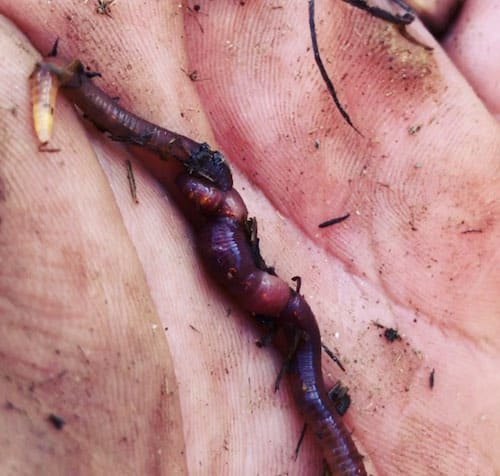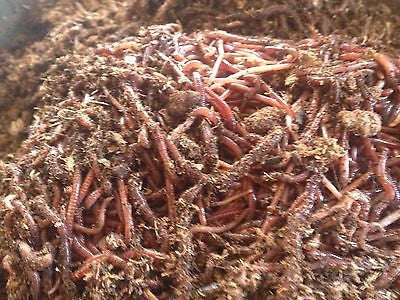Organic Composting with Red Wiggler Worms - Increase Your Yard's Development
Organic Composting with Red Wiggler Worms - Increase Your Yard's Development
Blog Article
Making The Most Of the Conveniences of Red Wiggler Worms: A Comprehensive Handbook for Home Gardeners and Urban Farmers
In the world of sustainable horticulture practices, red wiggler worms stand as unrecognized heroes, quietly changing natural waste into nutrient-rich spreadings that can function wonders for soil health and wellness. As home garden enthusiasts and urban farmers significantly seek ecologically pleasant and economical means to enhance their yards, the possible benefits of utilizing the power of red wigglers can not be overemphasized. From reducing kitchen area waste to growing healthier plants, the application of these humble animals uses a wide variety of advantages. By checking out the details of how to properly care for and maximize the benefits of red wiggler worms, individuals can unlock a wealth of chances for enhancing the sustainability and efficiency of their horticulture undertakings.
Understanding Red Wiggler Worms
Red Wiggler worms, renowned for their efficient composting capabilities, are a species of earthworms widely utilized in vermiculture methods. These worms, clinically understood as Eisenia fetida, prosper in decomposing organic material, making them excellent prospects for composting.
One trick feature of Red Wiggler worms is their reproductive price. These hermaphroditic animals have both women and male reproductive organs, allowing them to reproduce rapidly under beneficial conditions. A mature Red Wiggler can produce multiple children in a short period, ensuring a stable population within a composting system.

Establishing a Worm Bin
When establishing a worm bin for vermiculture functions, correct prep work and attention to detail are essential for creating a conducive environment for Red Wiggler worms. Begin by selecting an appropriate container for your worm bin.

Area the worm container in a cool, dark location away from direct sunshine and extreme temperatures. By adhering to these steps, you can establish up a prospering worm bin that will successfully process natural waste right into nutrient-rich vermicompost for your yard.
Feeding and Preserving Worms
Making sure a nutritious and balanced diet regimen is vital for the wellness and performance of Red Wiggler worms in a vermiculture system. Red Wigglers are voracious eaters, efficient in eating their own body weight in natural matter daily. To preserve a thriving worm populace, it is important to learn the facts here now supply them with a variety of food scraps such as vegetables and fruit peels, coffee premises, tea bags, and crushed eggshells. Nonetheless, it is essential to stay clear of feeding them citrus fruits, onions, garlic, dairy products, meat, and oily foods as these can be hazardous to the worms or trigger undesirable odors in the container.
Proper wetness degrees are likewise crucial for the well-being of Red Wiggler worms. By faithfully monitoring their diet, wetness, and environmental problems, home garden enthusiasts and urban farmers can sustain a effective and healthy Red Wiggler worm population for composting purposes.
Harvesting Worm Spreadings
To successfully draw out nutrient-rich worm spreadings from the vermicompost, a systematic harvesting procedure is vital for maximizing the composting advantages. The initial step in gathering worm spreadings is to motivate the worms to migrate to one side of the bin.
After the spreadings have been collected, it is essential to separate any continuing to be worms from the spreadings to avoid hurting them throughout storage space or application. One effective method is to produce conical piles of spreadings under brilliant light. Worms will intuitively move far from the light, permitting simple separation and elimination.
Finally, the gathered worm spreadings ought to be stored in an amazing, dark, and completely dry place to maintain their high quality and efficiency as a nutrient-rich soil modification. By adhering to these actions, home garden enthusiasts and urban farmers can take full advantage of the advantages of red wiggler worms in their vermicomposting systems.
Utilizing Worm Castings in Horticulture
The consolidation of nutrient-rich worm spreadings right into yard soil can significantly improve plant development and general soil health. Worm castings, also referred to as vermicast, are a natural plant food generated by red wiggler worms as they break down raw material. These castings are abundant in necessary nutrients like nitrogen, phosphorus, potassium, and advantageous germs that promote plant development and improve dirt structure.
When using worm spreadings in horticulture, it is vital to mix them thoroughly into the dirt or use them as a top dressing around plants. The slow-release nature of worm castings guarantees a constant supply of nutrients to plants over time, lowering the pop over here threat of nutrient leaching and promoting long-lasting dirt fertility. Additionally, worm spreadings assist boost soil oygenation, water retention, and microbial activity, developing a healthy atmosphere for plant roots to thrive.

Final Thought
In conclusion, the usage of red wiggler worms in home gardening and city farming can substantially benefit dirt health and wellness and plant development. By comprehending link just how to establish up and preserve a worm container, feed the worms properly, and gather their nutrient-rich castings, garden enthusiasts can take full advantage of the advantages of these earthworms.
In the world of sustainable horticulture techniques, red wiggler worms stand as unrecognized heroes, quietly transforming natural waste right into nutrient-rich castings that can work marvels for soil wellness.When establishing a worm container for vermiculture purposes, proper prep work and focus to detail are essential for creating a favorable setting for Red Wiggler worms. The very first step in harvesting worm castings is to motivate the worms to move to one side of the bin. Worm castings, also known as vermicast, are an all-natural plant food generated by red wiggler worms as they break down natural matter. By recognizing just how to establish up and preserve a worm bin, feed the worms properly, and gather their nutrient-rich spreadings, gardeners can take full advantage of the benefits of these earthworms.
Report this page